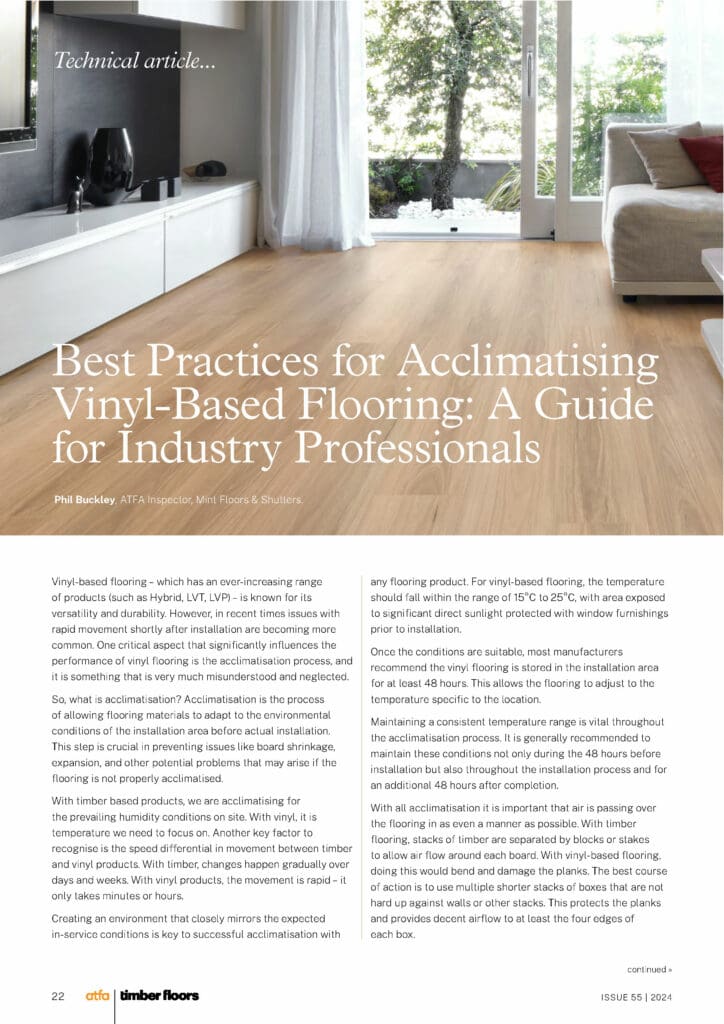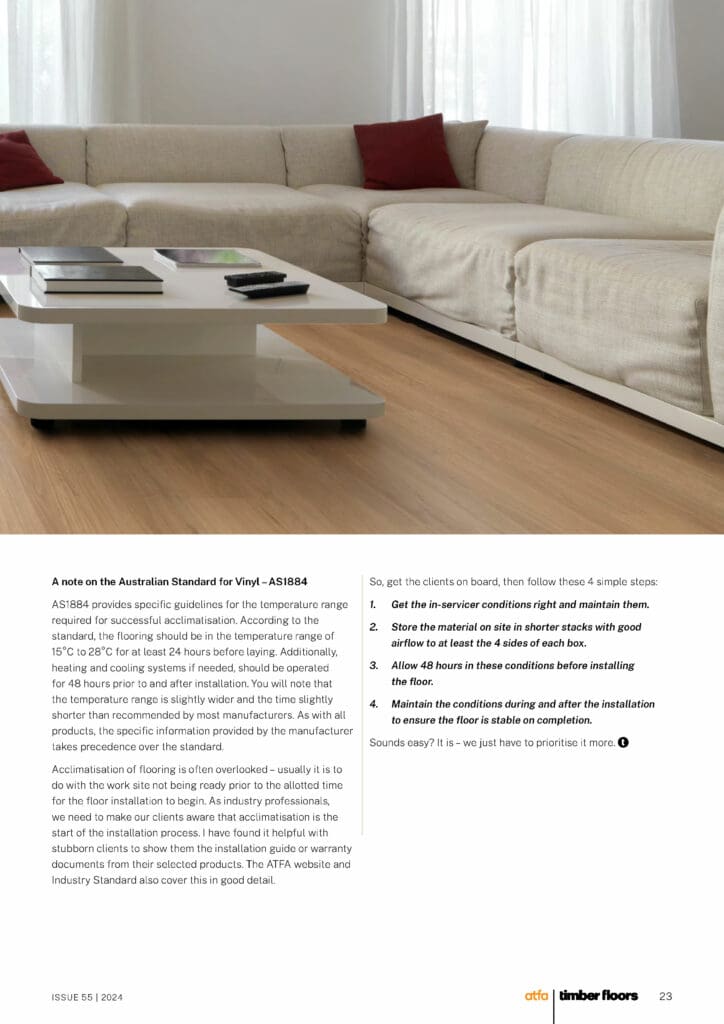Best Practices for Acclimatising Vinyl-Based Flooring: A Guide for Industry Professionals

Vinyl-based flooring – which has an ever-increasing range of products (such as Hybrid, LVT, LVP) – is known for its versatility and durability. However, in recent times issues with rapid movement shortly after installation are becoming more common. One critical aspect that significantly influences the performance of vinyl flooring is the acclimatisation process, and it is something that is very much misunderstood and neglected.
So, what is acclimatisation? Acclimatisation is the process of allowing flooring materials to adapt to the environmental conditions of the installation area before actual installation. This step is crucial in preventing issues like board shrinkage, expansion, and other potential problems that may arise if the flooring is not properly acclimatised.
With timber based products, we are acclimatising for the prevailing humidity conditions on site. With vinyl, it is temperature we need to focus on. Another key factor to recognise is the speed differential in movement between timber and vinyl products.
With timber, changes happen gradually over days and weeks. With vinyl products, the movement is rapid – it only takes minutes or hours. Creating an environment that closely mirrors the expected in-service conditions is key to successful acclimatisation with any flooring product. For vinyl-based flooring, the temperature should fall within the range of 15°C to 25°C, with area exposed to significant direct sunlight protected with window furnishings prior to installation.
Once the conditions are suitable, most manufacturers recommend the vinyl flooring is stored in the installation area for at least 48 hours. This allows the flooring to adjust to the temperature specific to the location.
Maintaining a consistent temperature range is vital throughout the acclimatisation process. It is generally recommended to maintain these conditions not only during the 48 hours before installation but also throughout the installation process and for an additional 48 hours after completion.
With all acclimatisation it is important that air is passing over the flooring in as even a manner as possible. With timber flooring, stacks of timber are separated by blocks or stakes to allow air flow around each board. With vinyl-based flooring, doing this would bend and damage the planks. The best course of action is to use multiple shorter stacks of boxes that are not hard up against walls or other stacks. This protects the planks and provides decent airflow to at least the four edges of each box.

A note on the Australian Standard for Vinyl – AS1884
AS1884 provides specific guidelines for the temperature range required for successful acclimatisation. According to the standard, the flooring should be in the temperature range of 15°C to 28°C for at least 24 hours before laying. Additionally, heating and cooling systems if needed, should be operated for 48 hours prior to and after installation. You will note that the temperature range is slightly wider and the time slightly shorter than recommended by most manufacturers. As with all products, the specific information provided by the manufacturer takes precedence over the standard.
Acclimatisation of flooring is often overlooked – usually it is to do with the work site not being ready prior to the allotted time for the floor installation to begin. As industry professionals, we need to make our clients aware that acclimatisation is the start of the installation process. I have found it helpful with stubborn clients to show them the installation guide or warranty documents from their selected products. The ATFA website and Industry Standard also cover this in good detail.
So, get the clients on board, then follow these 4 simple steps:
- Get the in-servicer conditions right and maintain them.
- Store the material on site in shorter stacks with good airflow to at least the 4 sides of each box.
- Allow 48 hours in these conditions before installing the floor.
- Maintain the conditions during and after the installation to ensure the floor is stable on completion.



